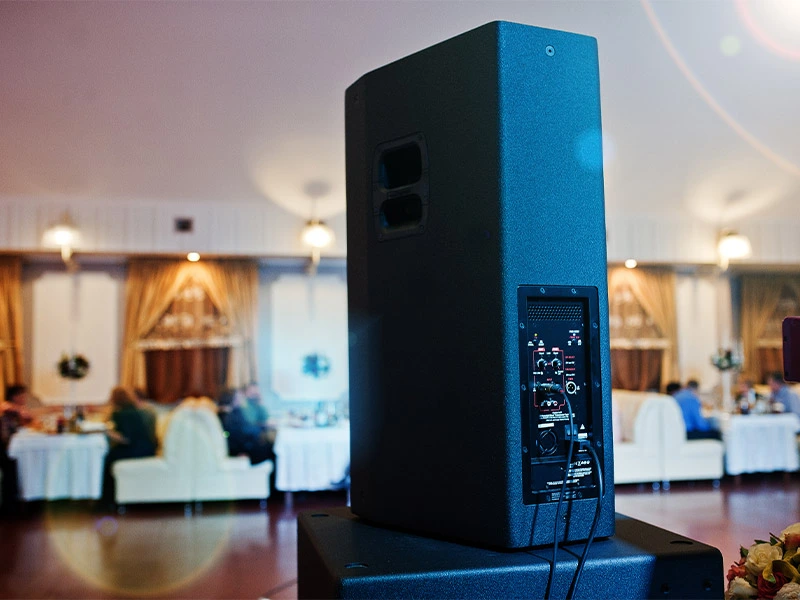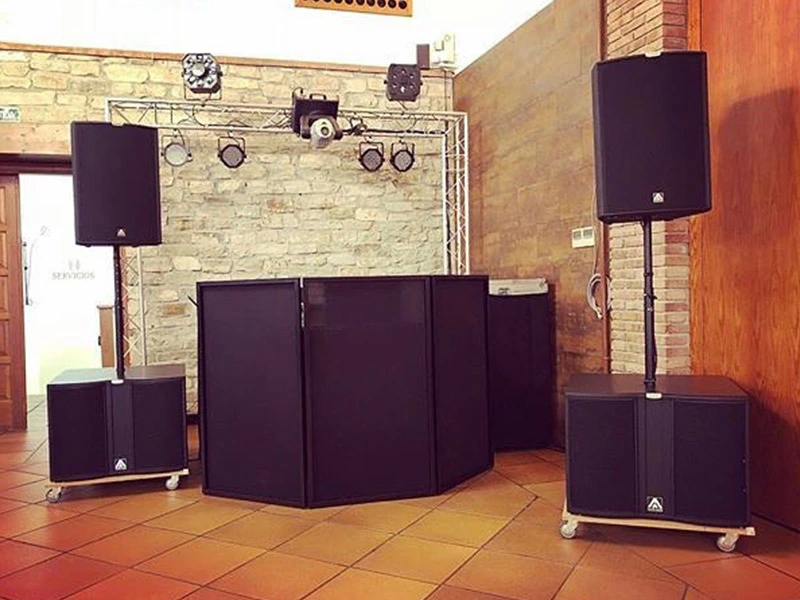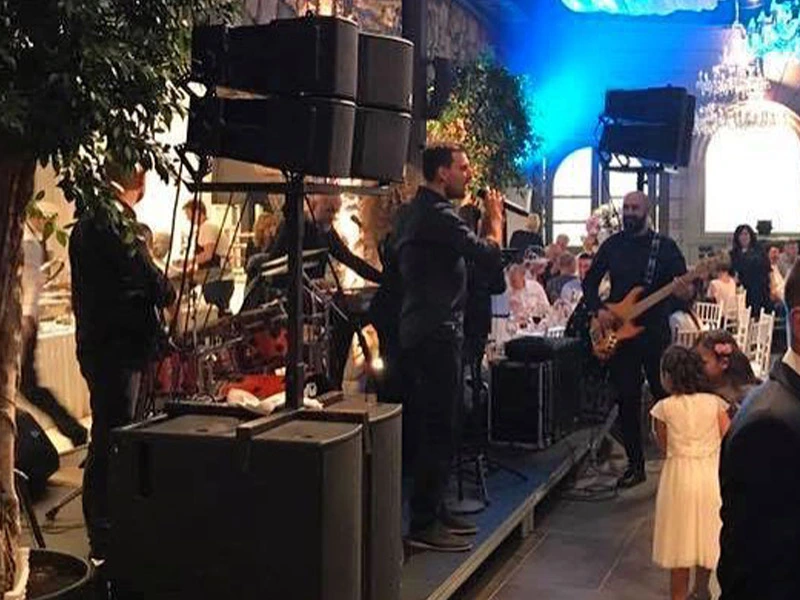What are the different types of PA systems?
PA Speaker Systems
Public Address (PA) systems are fundamental in amplifying sound across various settings, from small conference rooms to large music venues. But what exactly is a PA system, and how do its various types differ in functionality and application? Understanding the different types of PA systems, how to select the best one, and the nuances in choosing a system tailored to specific needs is crucial to getting the desired results.
We delve into these aspects, discuss some pros and cons, and provide some insight for both professionals and general PA users from live bands to mobile DJs, and the PA speaker systems for fixed installation into venues.
Different Types of PA Systems
PA systems vary widely in size and complexity, catering to different settings and requirements. To simplify things we can group them into three types: small systems for individual performers, medium systems for small bands with multiple microphones, and large or full-size systems for substantial venues.
A sound system for live band use for instance will usually consist of a set of 12” full-range speakers (nearly always active), possibly a subwoofer for the kick drum and bass guitar if the band is all going into the PA, and 10” or 12” monitor speakers for the vocalists, with all the signals running through an audio mixer.
In contrast, a bar or club will usually be using a selection of passive PA cabs and subwoofers located at various positions around the building, powered by a dedicated amplifier room via a speaker management system. This will be being fed from the mixer in the DJ booth, which will also have its own monitors.
As a general rule, the speaker types within most PA systems are often categorised into 'main speakers or front of house' for a broad audio frequency range, 'bass speakers or subwoofers' for lower frequencies, and 'monitors or foldbacks' for performers to hear themselves away from the main system output.




What is the Best PA System?
The best PA system depends completely on the specific application. For instance, line array systems are excellent for large venues like concert halls, offering consistent sound distribution over a wide area, but would be totally unsuitable for small, intimate venues.
In contrast, portable PA systems are ideal for smaller, more mobile setups like classrooms or busking performances, but won't be suitable for the sound in a bar or club. Each type serves different acoustic needs and venues.
So ‘best’ is a case of suitability rather than overall cost or flashy features. As with all consumer equipment, there is a hierarchy of brands that fight it out for the title of being the best, but even the most expensive 12-inch monitor speaker isn't going to do you much good if you need a system to cover a festival.
Choosing what is best for you requires a focused approach. What is it for? How big is the maximum audience size needed? Fixed installation or mobile system? Do you want it as background sound or is it a pounding club system? The more you filter down what's required, and then factor in your budget, there will actually be only a few choices of PA systems suitable.
Almost all professional PA speakers are available in passive or active (powered) variants to suit different situations, and the levels of performance available can depend on many factors, not just the overall cost, though obviously, that will always play a part when you want higher quality or the latest technology.
How Do I Choose a PA System?
Choosing the right PA system involves considering several factors like the size of the venue, the type of event, and the level of portability required (if any). For small, intimate gigs and solo performers, a simple system with either a single or pair of active speakers, a mixer, and a microphone suffices. Larger settings, like live band performances, demand setups with more powerful speakers, on-stage monitors, and mixers capable of multiple mics and input signals.
The choice between active (built-in amplifiers) and passive speakers also plays a significant role based on the desired control and setup complexity, as previously discussed. Many favour the convenience of active speakers, and they suit the needs of DJs and bands extremely well. Passive systems seem to be either the budget end of things or at the very top end for club installs and stage line array systems, where it's far better to have all the amplification and processing in one easy-to-reach location.
Budget constraints will always play a part in any PA system purchase, though for most live performers it can be a scaleable thing, with your main speakers ideally being the very best you can stretch for, and things like subwoofers being easily added at a later time when funds allow it.
It's an old adage, but always go with head over heart when it comes to choosing any equipment which you need to be a reliable work tool. Make sure it can comfortably perform to the levels required, preferably with some room to spare, which will help with longevity.


Read More...
PA Systems - Types and Applications
With the who, what, and where covered, we will take a look at the most common types of PA systems available on the market, from simple portable speakers ideal for fitness classes or a wedding speech to the full-on line array systems designed for live stages. Each type has its specific intended use, and choosing the correct speaker system for the task is hugely important in order to get both the desired performance level and longevity from the equipment
Portable PA Systems
These are compact, lightweight, and typically designed for ease of mobility. Ideal for small venues, street performers, or for use in schools and corporate events, portable PA systems include built-in amplifiers with onboard mixers and are often packaged with wired or wireless microphones. They are designed to be all-in-one solutions, with playback features such as MP3 players and Bluetooth connectivity, and inputs for external source devices such as a CD player, Laptop, or musical instruments.
Many benefit from having rechargeable battery systems for cable-free operation, and features to aid portability such as pull-up trolley handles and wheels. These systems are available in a good selection of performance levels and sizes, and are great for situations where you need a quick, easy setup with minimal technical complexity.
Point Source PA Systems
This is the professional term for what most people think of as a ‘normal’ PA that usually consists of a pair of speaker cabs. These are the traditional PA systems where sound radiates from a single point. This includes standalone speakers mounted on tripods for mobile rigs, or wall-mounted positioning for permanent installations. Ideal for small to medium-sized venues, point source systems are versatile and relatively easy to set up.
They come in both non-powered (passive) designs which require an external amplifier, or the popular powered (active) type which have their power amps built-in, making for a simplified setup.
Point source speakers are the mainstay of live entertainment, from mobile DJ work to pub bands and any small to medium-sized events. They offer great power and clarity for a relatively low cost and are designed to endure the rigours of transport. They come in a huge variety of output power levels and feature sets depending on budget, and will often be found paired with a matching subwoofer speaker to allow for even greater performance.
Fixed Installation PA Systems
Also referred to as commercial sound systems, these are permanently installed in a location. Common in places like bars, churches, theatres, and large auditoriums, they are designed to cover a specific area uniformly with sound. These systems usually comprise high-quality speakers, amplifiers, mixers, and often a control system to manage different zones and inputs.
Column PA Systems
Featuring slim, column-like speakers that provide a wide dispersion of sound, with subwoofers for the lower frequencies, they provide a great blend of portability and performance. Column speaker systems offer a different take on sound production compared to traditional portable PA systems in terms of sound quality and coverage, behaving more like a mini line array in their sound delivery. They have become hugely popular for solo performers and are perfect for discreet yet powerful performances at events in medium-sized venues like conference halls.
They come in a variety of designs, with the columns being either pole mounted to the subwoofer, or the column being a complete sectional tower unit. Depending on the type and cost they can include built-in mixers, DSP systems, Bluetooth connectivity, and pretty much all column speaker systems are self-powered (active) for convenience.
Line Array Systems
Predominantly used in large venues and outdoor festivals, line array systems consist of multiple loudspeaker elements arranged in a vertical line that is usually suspended from a stage truss or rigging, and the multiple modules take the shape of a gentle curve (speaker banana!).
This design allows sound to travel much further with less loss of volume and clarity than traditional speakers as each module projects sound at a narrow angle. Line arrays can be complex to set up in a larger format, and often require professional operation, but they deliver superior sound quality and coverage for large-scale events.
They are usually available in both active and passive options, with active systems now using modern Class D amplification and often including a variety of digital protection systems to ensure the array runs to its potential without damage. They are available in a range of sizes to suit different applications.
Horn Speaker Systems
The odd one out really, but still an important inclusion for professional PA systems as they are often the best/only option when including audio in outdoor spaces. Horn speakers are specifically designed to project sound over large areas, and are ideal for announcements and general music playback. While they don't offer the sound quality of a standard speaker system, horns give you the ability to distribute sound in a way that no other speaker can.
Popular uses are sports arenas, school playgrounds and playing fields, and outdoor commercial spaces. They are generally operated on the 100-volt line format which provides them the huge benefit of removing impedance loading issues and allowing for extra long speaker cable runs without any issues.
Modular PA Systems
These systems offer a mix of portability and power, allowing you to add or remove components based on the size and requirements of the event. They can range from simple setups with a couple of speakers and a mixer to more complex arrangements with multiple speakers, subwoofers, and dedicated monitors.
Generally, you will find these types of systems in place for touring shows and larger function bands. They will often be a mix of both passive and active speaker systems, with a core sound system that never changes, but with the ability to easily add extra speakers for bigger venues, extra stage monitoring for varied performer numbers, and suitable mixing desk capability to cope with whatever configuration is being used for that event.
Conclusion
Each type of PA system has its unique strengths and is suited for different environments and uses. When selecting a PA system, consider factors like the size of the venue, the type of event, the portability requirements, and of course, the budget. Line arrays look impressive, but it's likely a bit overkill for your local pub gig, even if you have the money.
As with many things, the suitability of a sound system should always be the top priority in your decision-making process. Bigger isn't always better, and equally, the overall cost of a PA system isn't always a reflection of the performance it offers, or whether it will do specifically what you need it to. That said, of course, the opposite is also true, and expecting a professional PA system for boombox money will only ever bring disappointment.
Understanding the differences between the types can help you make an informed decision that best suits your audio needs.


